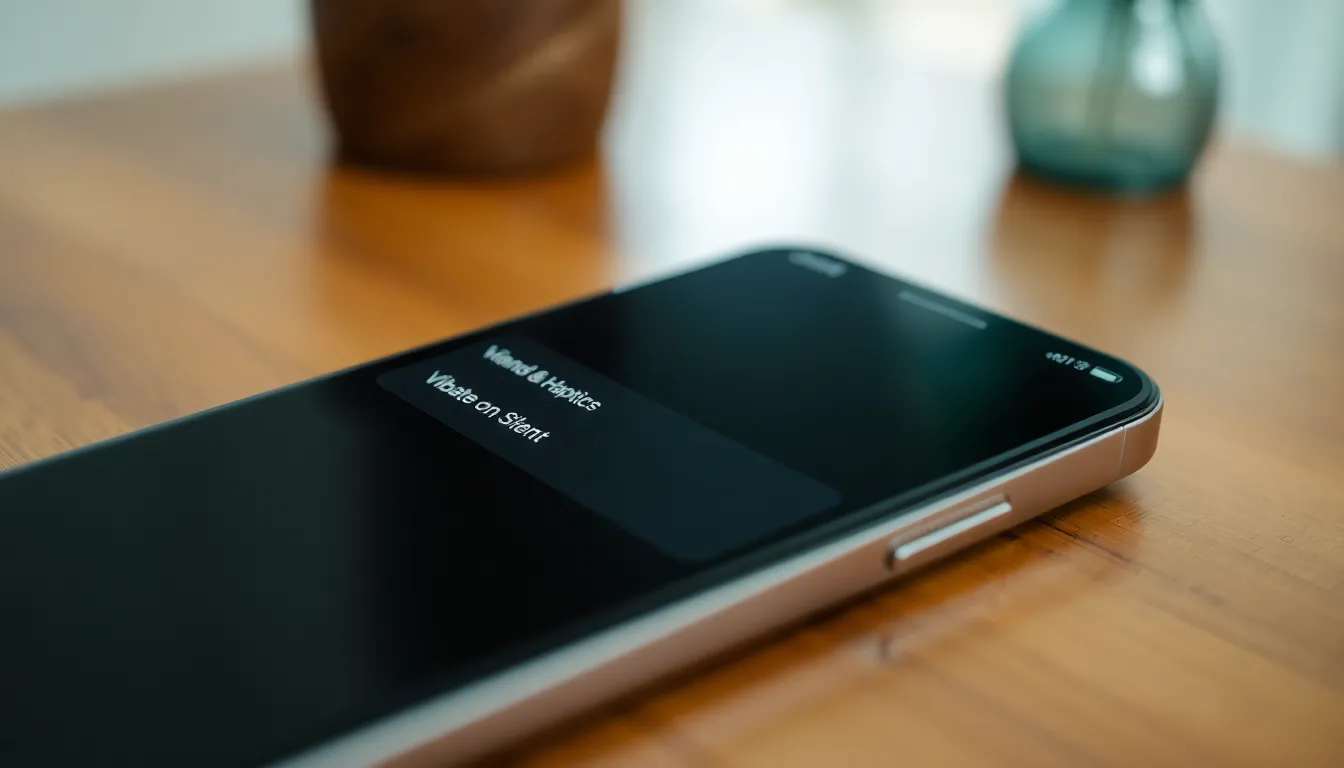Picture this: you’re waiting for an important call, and your iPhone sits silently, mocking you. No vibrations, no alerts—just a calm, unbothered device. It’s enough to make anyone question their sanity. Why isn’t it vibrating? Is it playing hard to get or just on a silent retreat?
Table of Contents
ToggleCommon Reasons Why iPhone Doesn’t Vibrate
Several factors can cause an iPhone to remain silent despite receiving calls or notifications. Understanding these issues improves troubleshooting efforts.
Hardware Issues
Damaged vibrate motors can lead to a non-vibrating iPhone. If the phone has been dropped or exposed to moisture, hardware failure might occur. Loose connections inside the device might disrupt the vibration response. Checking for physical damage can help identify these problems. Seeking assistance from a professional technician resolves hardware-related issues effectively.
Software Glitches
Outdated iOS versions can impact vibration functionality. Some software bugs might cause the vibration feature to malfunction. Restarting the device often clears minor glitches. Adjusting vibration settings in the menu might bring it back to life. Resetting all settings restores defaults without deleting data, helping resolve persistent issues.
Checking the Vibration Settings

Checking vibration settings is essential for ensuring that an iPhone alerts users as expected. Many users find that simple adjustments can restore the vibrating function.
Adjusting the Settings
Adjust vibration settings to verify that notifications can be felt. Navigate to Settings, then tap Sounds & Haptics. Ensure the Vibrate on Ring and Vibrate on Silent options are enabled. After that, test a notification or call to see if the iPhone vibrates. If the options are already activated, toggle them off and on again for potential resolution. This process often resolves minor glitches affecting vibration.
Resetting All Settings
Resetting all settings can also address vibration issues. Access Settings, tap General, and select Transfer or Reset iPhone. Choose Reset and then tap Reset All Settings. This action doesn’t erase personal data or apps but restores system settings to default. Users must re-enter Wi-Fi passwords and set preferences afterward. Following a reset, check if the vibration function works correctly during notifications or calls.
Troubleshooting Steps
When an iPhone doesn’t vibrate, several troubleshooting methods can help identify and resolve the issue.
Restarting Your iPhone
Restarting the device offers a quick fix for numerous glitches, including vibration issues. Tap and hold the power button and either volume button until the slider appears. Slide it to turn off the iPhone, then wait a few seconds before pressing the power button again to turn it back on. This process refreshes the phone’s system and can often restore lost functionalities, including vibration alerts. Regularly restarting the device can also help maintain optimal performance and prevent future issues.
Updating iOS
Updating to the latest iOS version is crucial for ensuring that all features, including vibration functions, operate correctly. Go to Settings, select General, then tap on Software Update to see if a new version is available. If an update exists, download and install it. This process not only enhances security but also resolves bugs that may be causing vibration malfunctions. Keeping the iOS updated ensures access to the latest features and fixes.
When to Seek Professional Help
Experiencing persistent vibration issues may signal a more serious problem. Noticing damage or irregularities in the iPhone, like cracks or liquid exposure, warrants immediate attention from a professional. Seeking help is advisable if basic troubleshooting steps fail to restore vibration functionality, such as restarting the device or updating iOS.
Consulting an expert makes sense when the device has sustained physical damage. A technician can identify issues like damaged vibration motors or loose internal connections. If the device fails to vibrate after checking settings and performing resets, expert diagnostic tests may uncover hidden problems.
Users should consider professional repair if the iPhone vibrates under some circumstances but not others. Inconsistent vibration could indicate complex software glitches or hardware malfunctions that require specialized skills. Repair services can often address both software resets and hardware repairs, ensuring comprehensive solutions.
Monitoring battery health can also provide insights. A failing battery might hinder vibration functions. Users should seek professional assistance if they suspect battery-related issues after noticing abnormal performance, such as overheating or rapid battery drain.
Prompt action often leads to quicker resolutions, so users should be proactive in addressing persistent issues. Repair services can restore functionality and provide peace of mind, enabling users to rely on their iPhones for notifications and alerts again.
Addressing vibration issues on an iPhone can be a straightforward process. By checking settings and ensuring that both hardware and software are functioning properly, users can often resolve the problem without hassle. Regularly updating iOS and restarting the device are effective steps to maintain optimal performance.
For persistent issues that remain unresolved, seeking professional assistance is essential. Experts can diagnose and repair hardware malfunctions or complex software glitches. Staying proactive about device maintenance ensures that users stay connected and receive important notifications without interruption.




